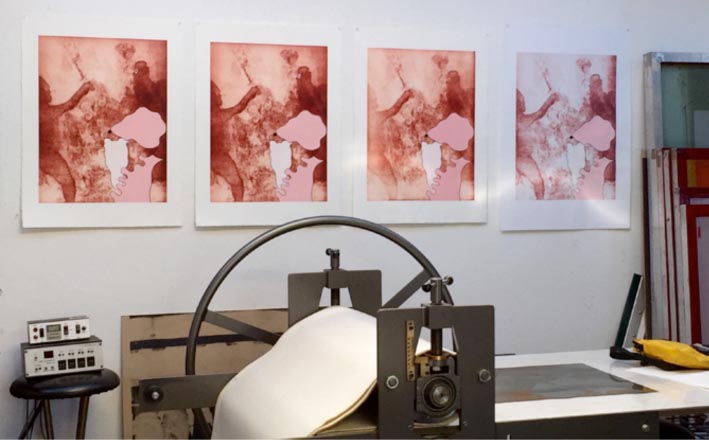What is a print?
A print is a copy or reproduction of a work of art onto another surface, usually paper. Prints are created by transferring ink from a matrix or template to a sheet of paper or other material. Common types of prints include lithographs, serigraphs, etchings, and woodcuts.
What Is The Difference Between A Lithograph And A Serigraph?
Lithography is a printing process that involves using a flat stone or metal plate on which the image to be printed is drawn. The drawing is then transferred to the printing surface using a chemical process. Serigraphy, also known as screen printing, is a stencil-based printing technique in which ink is forced through a fine mesh screen onto the printing surface.
Other Types of Print:
Etching:
Etching is a print made by drawing on a metal plate with an acid-resistant substance, such as wax or resin. The plate is then submerged in an acid bath, which eats away at the exposed areas of metal. The remaining raised areas hold the ink, and the print is made by running the plate through a press.
Woodcut:
A woodcut is a type of relief printing in which images are carved into the surface of a block of wood. The blocks are then inked and pressed onto paper to create the print.
Which Printing Method is Economical?
Of course, For cheap color copies printing any print method can be used. However, some methods are more economical than others.
Lithography, serigraphy, and etching are all relatively expensive printing processes. Woodcuts are less expensive, but the quality of the print is often not as high.
For the most economical print, you should use a photocopier. These machines use a digital printing process that is quick and easy. However, the quality of the copies is not always as high as with other methods.
What Are The Benefits of Print?
Even in the digital age, print has a lot to offer. For one thing, printed materials are Tangible. You can hold them in your hand, feel their texture, and see them in person. This makes them more memorable than digital content, which can often be forgotten about or overlooked completely.
Printed materials are also Cost-Effective. Once you have the initial template made, it’s relatively inexpensive to reproduce as many copies as you need. And if you need to make changes or updates, that can usually be done without too much difficulty or expense.
Another benefit of print is that it’s User-Friendly. Printed material can be easily shared and distributed, and it doesn’t require any special skills or knowledge to use. And unlike some digital formats, printed content is not susceptible to crashes or viruses.
Conclusion:
The print has been around for centuries, and it’s not going anywhere any time soon. Despite the fact that we live in a digital world, there are still many advantages to using print media. From being more memorable to being more user-friendly, print continues to offer a lot of value in today’s world.



